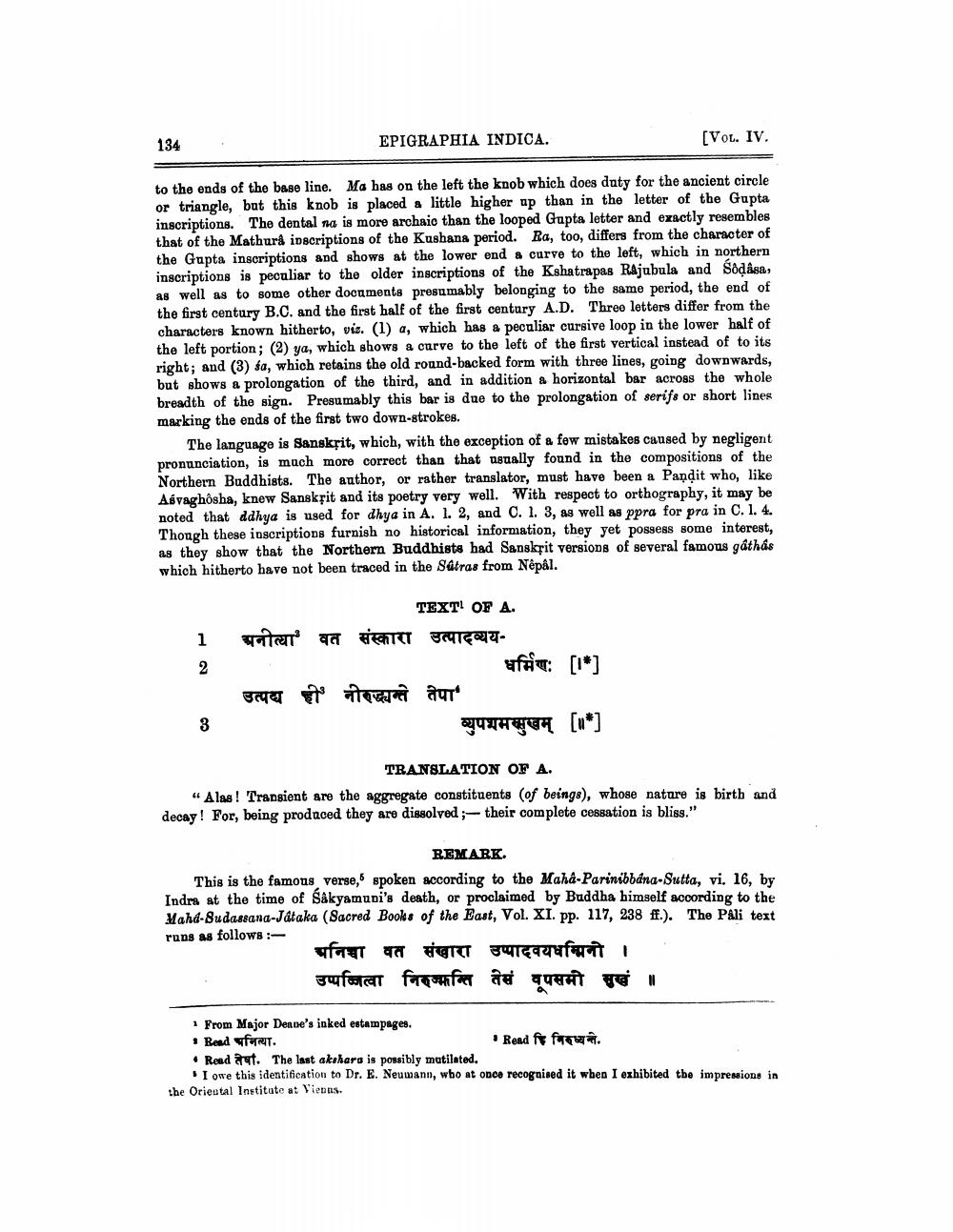________________
134
EPIGRAPHIA INDICA.
[VOL. IV.
to the ends of the base line. Ma has on the left the knob which does duty for the ancient circle or triangle, but this knob is placed a little higher up than in the letter of the Gupta inscriptions. The dental na is more archaic than the looped Gupta letter and exactly resembles that of the Mathura inscriptions of the Kushana period. Ra, too, differs from the character of the Gupta inscriptions and shows at the lower end a curve to the left, which in northern inscriptions is peculiar to the older inscriptions of the Kshatrapas Rajubula and Sodasa, as well as to some other documents presumably belonging to the same period, the end of the first century B.C. and the first half of the first century A.D. Three letters differ from the characters known hitherto, viz. (1) a, which has a peculiar cursive loop in the lower half of the left portion; (2) ya, which shows a curve to the left of the first vertical instead of to its right; and (3) śa, which retains the old round-backed form with three lines, going downwards, but shows a prolongation of the third, and in addition & horizontal bar across the whole breadth of the sign. Presumably this bar is due to the prolongation of serifs or short lines marking the ends of the first two down-strokes.
The language is Sanskrit, which, with the exception of a few mistakes caused by negligent pronunciation, is much more correct than that usually found in the compositions of the Northern Buddhists. The author, or rather translator, must have been a Pandit who, like Asvaghosha, knew Sanskpit and its poetry very well. With respect to orthography, it may be noted that adhya is used for dhya in A. I. 2, and 0. l. 3, as well as ppra for pra in C. 1. 4. Though these inscriptions furnish no historical information, they yet possess some interest, as they show that the Northern Buddhists had Sanskfit versions of several famous gathas which hitherto have not been traced in the Satras from Nepål.
1
TEXT OF A. अनीत्या वत संस्कारा उत्पादव्यय
får: [18] उत्पद्य ही नीरुद्ध्यन्ते तेपा'
44994 [u*)
TRANSLATION OF A. u Alas! Transient are the aggregate constituents (of beings), whose nature is birth and decay! For, being produced they are dissolved ;-their complete cessation is bliss."
REMARK. This is the famous verse, spoken according to the Maha-Parinibbdna-Sutta, vi. 16, by Indrs at the time of Sakyamuni's death, or proclaimed by Buddha himself according to the Mahd-Sudassana-Jataka (Sacred Books of the East, Vol. XI. pp. 117, 238 ff.). The PAli text runs as follows:
पनिच्चा वत संखारा उप्पादवयधम्मिनी । उप्पब्जित्वा निरुज्झन्ति तेसं वपसमी सुखं ॥
1 From Major Derne's inked estampages. . Bad भनित्या.
• Read ft fra • Road aut. The last akshara is possibly mutilated.
I owe this identification to Dr. E. Neumann, who at once recognised it when I exhibited the impressions in the Oriental Institute at Vietas.




